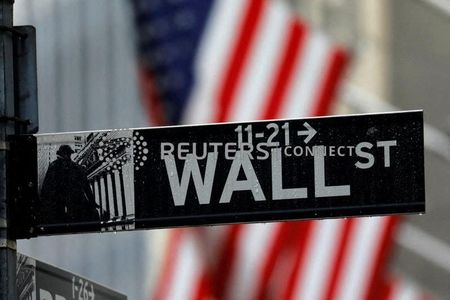
By Elizabeth Howcroft
LONDON (Reuters) – European stocks picked up on Tuesday but Wall Street futures were down amid nervousness about tensions between Russia and the West and the prospect of the U.S. Federal Reserve tightening monetary policy soon.
Those two factors combined have put world stocks on course for their biggest monthly drop since the pandemic hit markets in March 2020.
A build-up of Russian troops on Ukraine’s border has triggered fears in the West that Russia will invade. NATO said on Monday it was putting forces on standby and reinforcing eastern Europe with more ships and fighter jets.
The Federal Reserve begins its two-day meeting on Tuesday. It is expected to give guidance about the trajectory of monetary policy tightening, with investors expecting the first post-pandemic U.S. rate hike in March.
Tightening monetary policy typically hurts riskier assets, such as equities, and makes government bonds more attractive to investors.
Asian stock indexes extended Wall Street’s losses, but European markets opened higher after falling sharply on Monday.
Europe’s STOXX 600 was up 0.7% at 1317 GMT, showing some signs of recovery after it dropped to its lowest since October on Monday.
London’s FTSE 100 was up 1%.
But the MSCI world equity index, which tracks shares in 50 countries, was down 0.2%.
S&P 500 futures were down 1.6% while Nasdaq futures tumbled 2.2%.
World stocks have fallen 6.5% this month, the most since the 13.8% monthly drop when the COVID-19 pandemic hit markets in February 2020.
“What we have seen is a combination of the rising geopolitical risk … in combination with the market downside risk triggered by the more hawkish Fed,” said Eddie Cheng, head of international multi-asset investment at Allspring Global Investments.
Cheng said the geopolitical risk surrounding Ukraine would last much longer, whereas investors were likely to get more certainty from the Fed at this week’s meeting.
The world equity index has fallen below its 200-day moving average. The last time this happened, stocks had a 30% drop and bounce.
But Allspring’s Cheng said there was unlikely to be such a drop this time, in the absence of a driver as big as the start of the pandemic.
“We don’t expect that equities are going to go all the way down just because of one geopolitical risk,” he said.
The sell-off in equities had limited impact on rates markets, with investors pricing in about 100 bps of rate hikes for the Federal Reserve and Bank of England this year.
Although investors do not expect a rate hike at this week’s Fed meeting, the market is pricing in a 5.4% chance of this happening, according to Refinitiv data on Eikon.
The U.S. 10-year yield was at 1.776%, a touch higher on the day.
Germany’s benchmark 10-year yield was up 2 bps at -0.083%, with bonds supported by the risk-averse tone.
The U.S. dollar index was up 0.3% at 96.232, while euro-dollar slipped.
Oil prices recovered some of the previous day’s losses, as the geopolitical tensions fuelled supply fears.
Cryptocurrencies slipped further. Bitcoin was trading around $36,564. On Monday it hit a six-month low of $32,950.72, having halved since its latest all-time high of $69,000 hit in November.
(Reporting by Elizabeth Howcroft; editing by David Evans, Susan Fenton and Nick Macfie)






